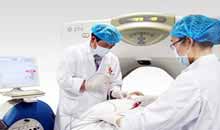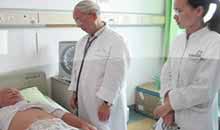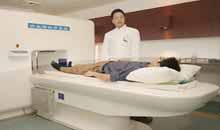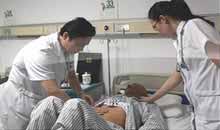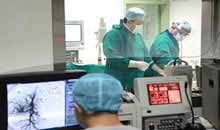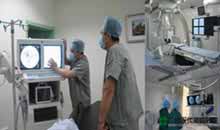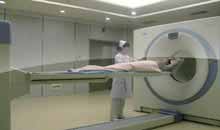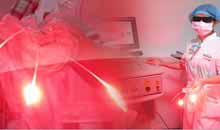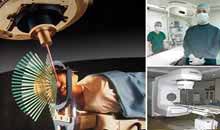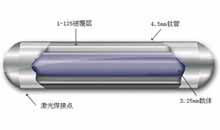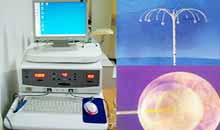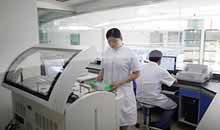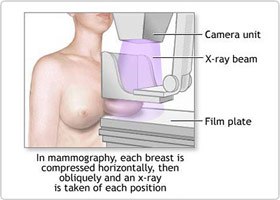 As one of the most common malignant tumors, breast cancer has already been listed as the “first killer” of women by World Health Organization.
As one of the most common malignant tumors, breast cancer has already been listed as the “first killer” of women by World Health Organization.
According to experts of Modern Cancer Hospital Guangzhou, early detection is the key to improve breast cancer prognosis. Female friends after 40 are advised to have breast self-exam once a month and go to hospital for regular check every year. Currently, breast cancer diagnosis methods has been quiet mature and they can be used to help patients find cancer lesions timely.
Breast Self-exam
1. In Front of a Mirror
Stand in front of a mirror with your hands down to see whether the outlook of your breast is normal and whether there is indentation of your nipples and shrinking or humps of breast skin. Slightly nip your nipples to see whether there is discharge and check your armpit to see whether there are swollen lymph nodes. At last, hold high your hands above your head and repeat the examination again.
2. Lying Down
When lying down, place a pillow under your right shoulder and put your right arm behind your head. Using your left hand, move the pads of your fingers around your right breast gently in small circular motions from outside to the center until cover the entire breast area and armpit. Use light, medium, and firm pressure. Squeeze the nipple; check for discharge and lumps. Repeat these steps for your left breast.
3. In the Shower
When bathing, soap your breast at first to make it sliding when checking. Put one of your hands behind your head, with fingers of another hand closed and straighten, carefully check every part of your breast with your finger pulps in spiral manner to see whether there are masses in your breasts. Use the same way to check the armpit. Squeeze the nipple with your thumb and forefinger to see whether there is any lump or discharge. Alternate your hands when checking your two breasts. Notice any changes and get lumps evaluated by your healthcare provider.
Clinical Breast Examination
1. Mammograms: A mammogram is an x-ray of the breast. While screening mammograms are routinely administered to detect breast cancer in women, diagnostic mammograms are used after suspicious results on a screening mammogram, such as a lump, breast pain, nipple discharge, thickening of the skin of breast and changes in breast shapes.
2. Ultrasound imaging examination: It can clearly reveal the form and boundary of breast tissues and whether there is mass in the breast, if any, its size, shape and texture (cystic or solid), etc. It provides comparatively reliable basis for the distinguishing between benign and malignant cancer. Go to have it if a lump is found in breast self-exam.
3. Thermal imaging examination: It is a method to reveal the temperature distribution of body surface with images. As cancer cells proliferate fast and vessels increase, the temperature of cancer surface rises higher than that of surrounding normal tissues, with the differences of which, diagnosis can be done.
4. CT scans: It can be used in determining the location of impalpable breast lesions before biopsy and staging breast cancer before treatment, as well as checking whether there are masses in the retromammary area, armpit and internal breast lymph nodes, and helping with treatment plan as well.
5. Cancer marker examination: During the cancerization process, a substance is produced and secreted by cancer cells. It directly releases components of cell tissues and exists in the cancer cells or body fluid of the parasitifer in the form of antigen, enzyme, hormone or metabolite. This kind of substance is called cancer marker, with which the examination methods include carcinoembryonic antigen (CEA), iron protein, monoclonal antibody, and so on.
6. Biopsy: Only after the diagnosis is confirmed can treatment for breast cancer be performed. Although there are plenty of examination methods for breast cancer nowadays, the result of biopsy is the only basis that can be used to confirm diagnosis. Biopsy can be divided into needle biopsy, incisional biopsy and excisional biopsy.
Here, experts from Modern Cancer Hospital Guangzhou suggest that female friends should go to hospital regularly for routine physical examinations every year.
If you have any questions, please contact us via online consultation, email or phone call. If you find our website useful, please follow our FaceBook and YouTube, health information will be updated regularly.



